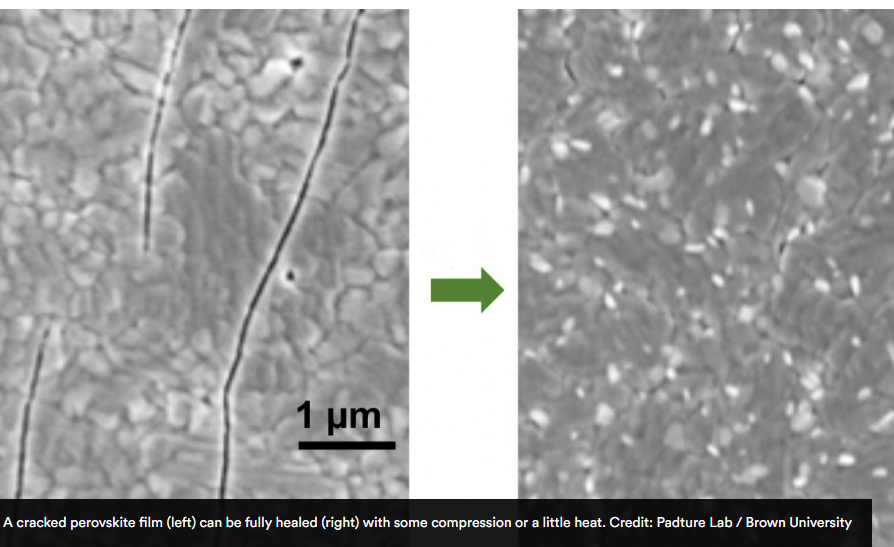
Courtesy of the researchers
Engineers have synthesized a tiny structure with high surface area and discovered how its unique architecture drives ions across interfaces to transport energy or information...
Read More

Engineers have synthesized a tiny structure with high surface area and discovered how its unique architecture drives ions across interfaces to transport energy or information...
Read More
A new study reveals good news for the possibility of using perovskite materials in next-generation solar cells. The study, published in the journal Acta Materialia, finds that though perovskite films tend to crack easily, those cracks are easily healed with some compression or a little bit of heat. That bodes well, the researchers say, for the use of inexpensive perovskites to replace or complement pricy silicon in solar cell technologies.
“The efficiency of perovskite solar cells has grown very quickly and now rivals silicon in laboratory cells,” said Nitin Padture, the Otis E...
Read More
Bismuth oxyiodide light absorbers. Credit: Steve Penney, University of Cambridge
Researchers have demonstrated how a non-toxic alternative to lead could form the basis of next-generation solar cells. The team from the University of Cambridge and the United States, have used theoretical and experimental methods to show how bismuth – the “green element” which sits next to lead on the periodic table, could be used in low-cost solar cells. Their results suggest that solar cells incorporating bismuth can replicate the properties that enable the exceptional properties of lead-based solar cells, but without the same toxicity concerns...
Read More
Recent Comments